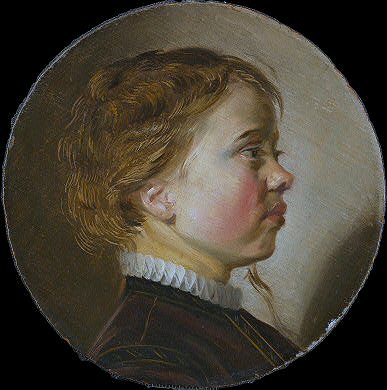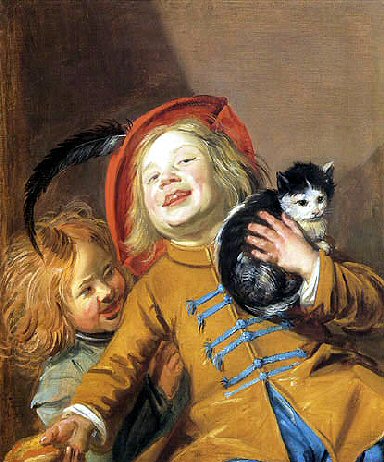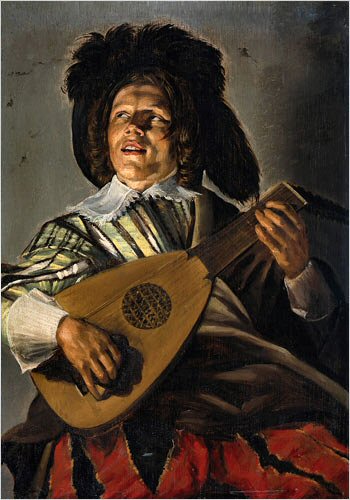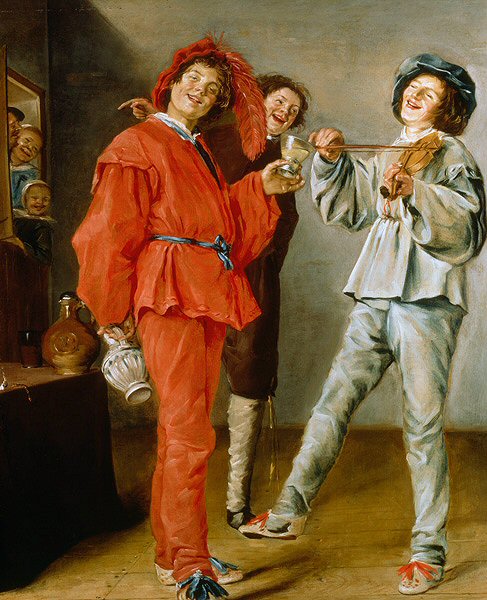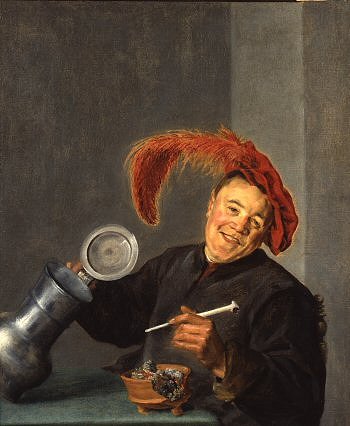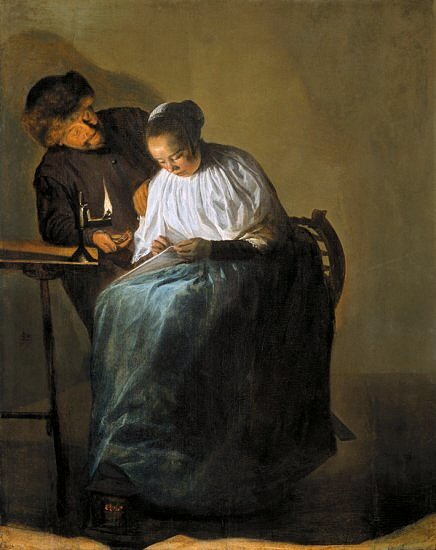|
La Chambre Des Reines
|
Paintings
|
Judith Jansdochter Leyster (also Leijster and also known as Judith Molenaer) 1609 - 1660 (click on painting to enlarge)
"Think of Judith Leyster as a
400-year-old answer to the art historian Linda Nochlin's famous question:
Judith Leyster the most famous female painter of the Dutch Golden Age, was born in Haarlem. Her father, Jan Willemszoon, was a clothmaker and the owner of a local brewery called the "Ley-ster" (lode star or pole star), from which the family took its surname. As Judith was described as a "leading star" in art, she used this play-on-words to create a special signature: a monogram of her initials with a shooting star.
Little is known of Leyster's early training, but she made a name for herself at a very young age. We know that Leyster's family moved from Haarlem to Vreeland near Utrecht, and many have speculated that at this time she came under the influence of the Utrecht Caravaggisti. Nevertheless, the dramatic effects of indirect, artificial lighting that these painters typically employed are not entirely paralleled in any of Leyster's canvases. It seems more likely that the superficial similarities to the style of the Utrecht Caravaggisti came by way of Frans Hals' circle of painters in Haarlem. By September 1629, Leyster's parents had moved to Zaandam, near Amsterdam, although it is not clear how long she remained with them there before returning to Haarlem. She was certainly back in her native town by November 1631 when she was a witness at the baptism of one of the children of Frans Hals. In the years following her return to Haarlem, Judith Leyster achieved a degree of professional success that was quite remarkable for a female artist of her time. Unlike many contemporary female artists, who concentrated on meticulously painting true-to-life flowers and insects, she ventured into more ambitious figure-based projects. No records survive to prove that Leyster studied with Hals in his studio, but a number of her works shows her to have been one of his closest and most successful followers. Competing with Frans Hals, Leyster chose remarkably similar themes:
portraits
* Young Boy in Profile, ca. 1630. Oil on panel *
children playing * Two children with a cat. Oil on canvas, 1629 * (click on painting to enlarge)
* A boy and a girl with a cat and an eel. Oil on canvas ca. 1635 *
musicians * The serenade. Oil on panel, 1629 * (click on painting to enlarge)
drinking companies
* Merry Company. Oil on canvas, ca. 1630-1631 *
and actors.
* The Jolly Toper. Oil on canvas, 1629 *
* The proposition. Man offering money to a woman. Oil on canvas, 1631 *
Leyster frequently places her subjects against a plain, monochromatic background, with nothing to distract the viewer from the figures, who are all shown in the midst of various actions. She is also known for her innovative and evocative night scenes, in which she experimented with the subtle effects of light and dark. Like her choice of subject, her brushwork was quick and bold: loose, but poignant. By 1633, she was a member of the Haarlem Guild of St. Luke, one of only two women (the other was a house painter) who gained entrance into the group. In 1636 she married Jan Miense Molenaer (ca.1610-1669), a fellow artist and art dealer and at times close follower of Hals, and the couple subsequently moved to Amsterdam, where they lived until 1648. They got five children. In October of 1648 the couple bought a house in Heemstede, near Haarlem, but continued to make regular visits to Amsterdam, where they had another house, and also to Haarlem. Leyster died in 1660 and was buried in Heemstede. "Many art historians have often assumed that Judith Leyster gave up
painting upon her marriage. With a recent discovery of a flower still life
and its date of 1654, we now have documentation that she continued her
career as a painter. It is likely that Leyster moved to still-lives and
botanical studies after her marriage, perhaps to split the market with
her husband." The number of surviving works attributed to her is 19, the above mentioned flower still life included. By the end of the 1800s Judith Leyster's work was virtually unknown, often attributed to other artists. Now rediscovered, her reputation is secure as a highly skilled, successful female in a field dominated by men.
Sources: Frans Hals
Museum, Haarlem, The Netherlands, National Gallery of Art, Washinton,
USA. Wikipedia.
For more info about Judith Leyster:
|


